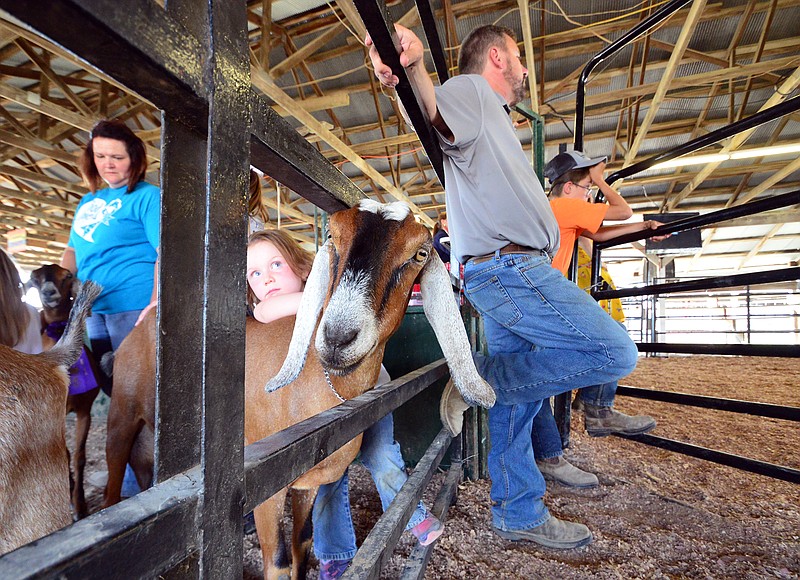There were droves of kids at the Jefferson City Jaycees Cole County Fair on Thursday, and there were also many children showing pigs, lambs, horses, dogs and other animals in addition to young goats.
Late morning was the time for the Pee Wee Livestock Show.
"It's teaching them responsibility," Keri Hale, of Henley, said of what the show designed for newcomers to be able to participate means. Keri's youngest daughter of three, Stella, brought a 4-month-old calf to the Pee Wee show.
Stella, 4, said she likes feeding her calf - corn feed and by a bottle - and likes to wash her, which her dad, Matt, said is done every day. Thursday was Stella's first time doing the Pee Wee show.
"One purpose is to teach young people how to feed, fit, and show their animals. The more important purpose is to provide an opportunity for personal growth and development of the young person," according to a University Missouri Extension document about the purpose of youth livestock projects.
"I think it's fun to watch them," the show's announcer, Natalie Benne, said. Benne said she never did the Pee Wee show herself as a child but wishes she had. She added that it's good experience for children for when they really do compete.
Thursday afternoon was the time for such a competition at the goat show, when youth in local 4-H and FFA clubs showed their dairy and meat, or breeding goats.
Nine-year-old Klara Cassil, of the St. Martins 4-H Club, had the grand champion dairy goat - one of three she had in the show.
Cassil said setting the goats is her favorite part of competition. Setting refers to positioning a goat's shoulders and legs.
Setting is important, because the look of a goat's profile is part of how the animal is determined to be a winner in the show.
Judge Ty Peckman explained the dairy goats - which in the show were of the Nubian breed - are visually evaluated on their likelihood to produce the best milk. The meat goats - of the Boer breed - are visually judged on their best ability to reproduce similar-looking goats as their offspring.
Depending on the category and sex of the goats, Peckman evaluated goats' udder qualities - including teat structure, uniformity and tightness of ligaments attached to the udder to a doe's body - the width of the animals' stance and their profile, which included shoulder height, spine length and levelness between the shoulders and hips.
The overall grand champ Boer goat doe belonged to Bryli Delashmutt, listed as of "open/Callaway County."
Delashmutt also won the percent blood, or non-purebred doe, category.
Among the buck goats, the overall champ belonged to Wyatt Carrender, of the Osage Bend Cloverleafs 4-H Club.
Bryar Delashmutt had the percent blood champ goat.
Children from the St. Thomas 4-H Club, Blair Oaks FFA, NCC FFA and Wardsville 4-H Club also competed in the dairy and meat goat shows.

